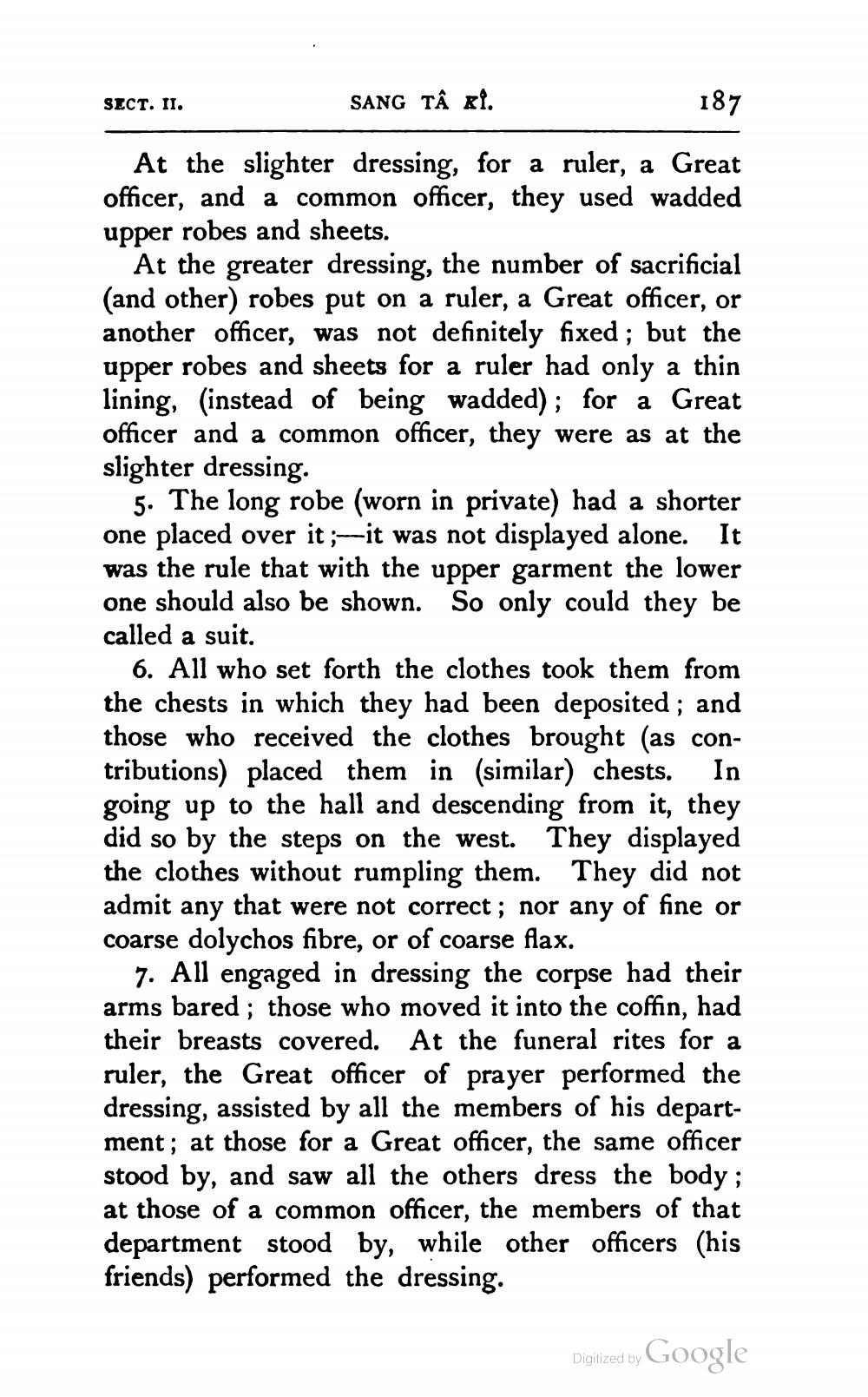________________
SECT. II.
SANG TA KỲ.
187
At the slighter dressing, for a ruler, a Great officer, and a common officer, they used wadded upper robes and sheets.
At the greater dressing, the number of sacrificial (and other) robes put on a ruler, a Great officer, or another officer, was not definitely fixed; but the upper robes and sheets for a ruler had only a thin lining, (instead of being wadded); for a Great officer and a common officer, they were as at the slighter dressing.
5. The long robe (worn in private) had a shorter one placed over it ;-it was not displayed alone. It was the rule that with the upper garment the lower one should also be shown. So only could they be called a suit.
6. All who set forth the clothes took them from the chests in which they had been deposited ; and those who received the clothes brought (as contributions) placed them in (similar) chests. In going up to the hall and descending from it, they did so by the steps on the west. They displayed the clothes without rumpling them. They did not admit any that were not correct; nor any of fine or coarse dolychos fibre, or of coarse flax.
7. All engaged in dressing the corpse had their arms bared; those who moved it into the coffin, had their breasts covered. At the funeral rites for a ruler, the Great officer of prayer performed the dressing, assisted by all the members of his department; at those for a Great officer, the same officer stood by, and saw all the others dress the body; at those of a common officer, the members of that department stood by, while other officers (his friends) performed the dressing.
Digitized by Google




